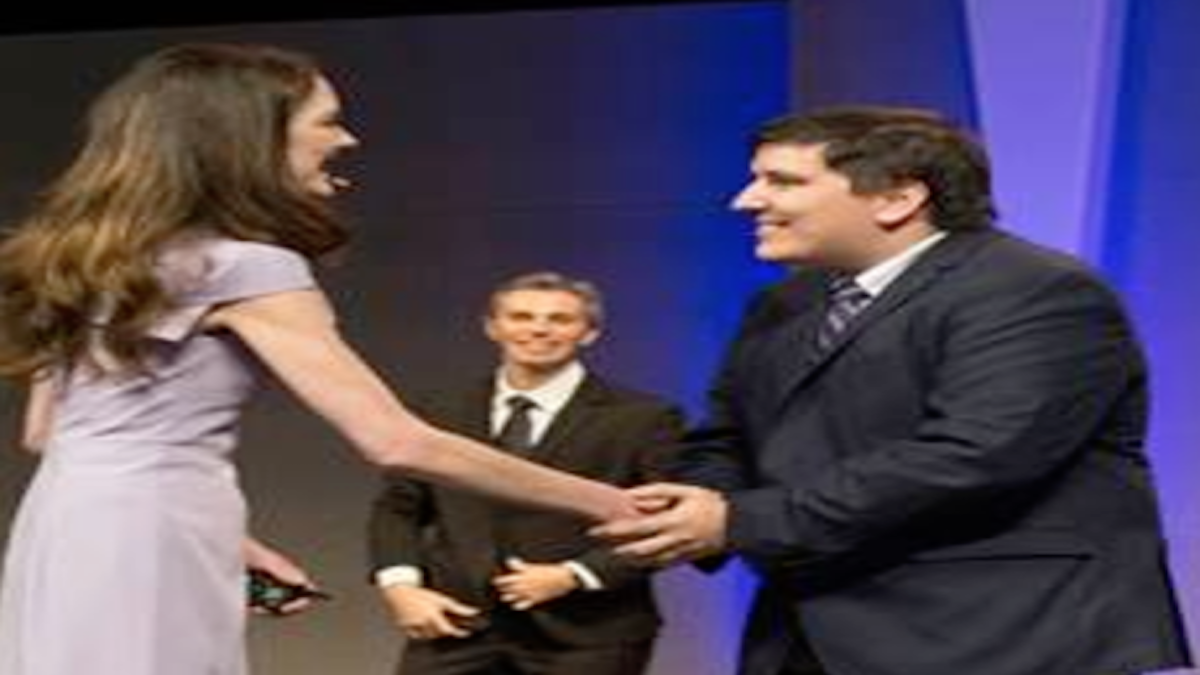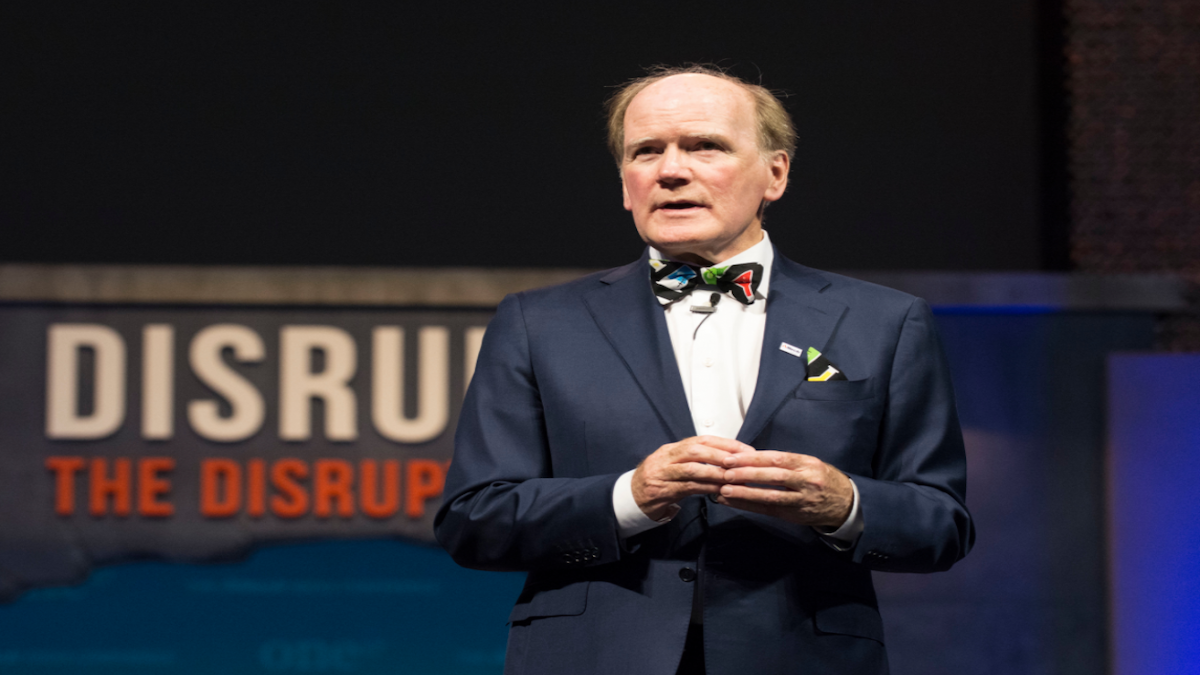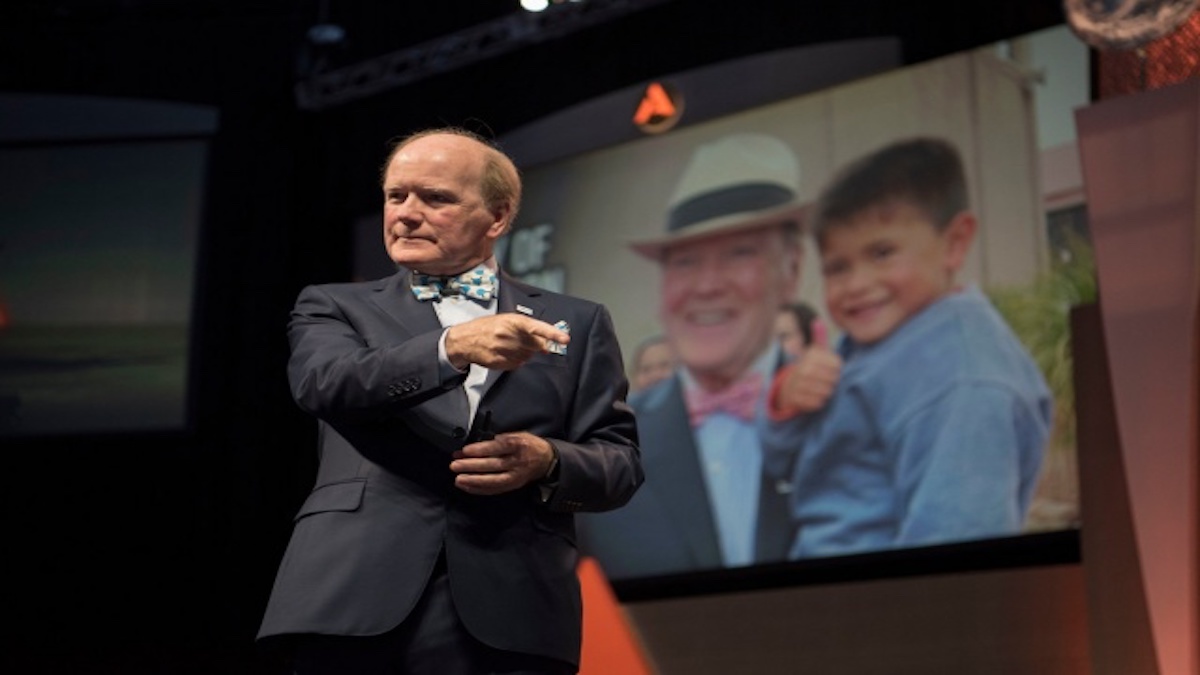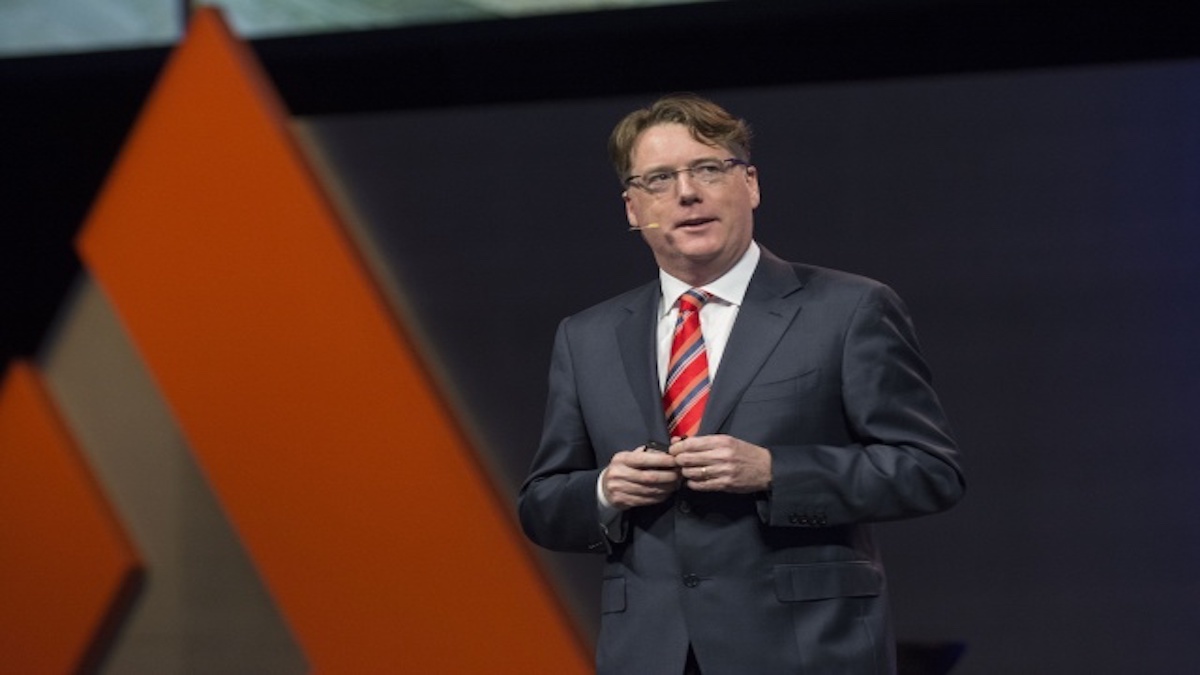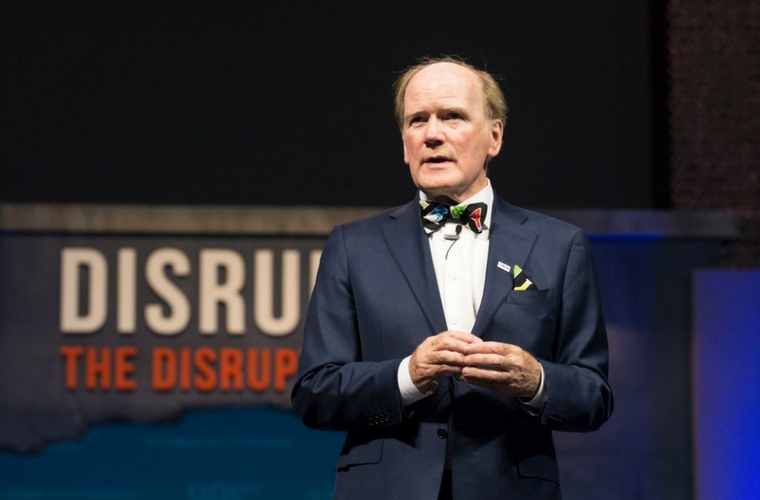To listen to our entire conversation with Lisa, click on the player.
Tom: As founder and CEO of futurethink, Lisa Bodell has transformed teams within organizations like Google, Novartis, Accenture, HBO, Cisco Systems, Citigroup, Merck, Fidelity, even the U.S. Navy.
Best-selling author of “Kill the Company,” her latest is “Why Simple Wins: Escape the Complexity Trap and Get to Work That Matters,” which is what we will do right now.
Thanks for joining us, Lisa.
Lisa: Oh, thanks for having me.
Tom: And do we humans have this tendency to complicate everything?
Lisa: We definitely have a tendency to complicate things. And one of the things that was interesting to me about doing the research in this book was that so much of the complexity that exists is self-imposed and unproductive, but most of it has actually been put on us unintentionally.
We create the beast that we become a slave to all the time. And a lot of that is driven by risk and fear and power and control, and that’s what drives us to want to have just one more metric to be safe; one more KPI; one more report, just to triple-check things; one more meeting to make another person help us with that decision, versus a lot more reliance on our gut, and we need to get back to that balance.
Clear away the clutter
Tom: You offer guidance on how to eliminate the mundane or the unnecessary from the daily routine and free up more time for work that matters. What are some key ways to clear away all that clutter?
Lisa: Oh, my gosh, I wish we had more time. The good news is that there are so many things that you can do that are very easy, and I’ll tell you a few of my favorites.
One of the things that you can do for yourself or with your team is you can kill stupid rules. A lot of things that we put in place had a purpose at one point, but they may have outlived their time. Things changed. We don’t spend enough time going back and reviewing our work practices and the rules we put in place to see if they’re relevant anymore.
So, what we do is we get people in the room and we say to them: “If you could kill any two rules to help you be more productive at work or be more innovative, what would you kill and why?” And what’s interesting is, that most people, they come up with rules, but most of the things they come up with are tools. They are cultural assumptions, they’re annoyances, they are those reports and meetings and e-mails. So, killing a stupid rule is great because it gets you in the process of subtraction, but also it gives people permission to eliminate. That’s one.
Another thing is to look for redundancies in your work or the things that you do that are duplicate. Do things less frequently. Some people have meetings for an hour just because that’s the default on their Outlook calendar.
We teach people a practice we call NNTR, and what this does is it helps clear (your) inbox. A lot of times, people get clogs in their inbox by people that are just responding with “thanks,” “got it,” you know, pleasantries, and those become annoyances. NNTR is called “no need to respond.” And when you put that in your subject line, people know that this is just an FYI e-mail, don’t feel the pressure to respond and, in fact, don’t respond, because I don’t want it in my inbox.
Tom: I’m going to thank you for that, right now.
Lisa: [Laughs]
Making simplicity practical
Tom: I found on your website, futurethink.com, a simplification toolkit, which seems to carry forward the ideas that you were just talking about. Tell us about that?
Lisa: One of the things I really like to do is not just talk about a theory, but really about practice. This is kind of the Midwesterner in me. I really like the practical “get things done.”
When I wrote this book, I decided I didn’t just want to talk about why simplicity is important. I have a full chapter dedicated to tools people can do right away.
We created a whole toolkit that people could actually use with facilitation instructions and worksheets with their own teams to really make it stick because simplicity can’t become a habit if we don’t change behaviors and the tactics that drive them.
So, the idea of the toolkit was: “Don’t take my word for it, try it, use it; one of these will help you get to the work that matters.”
Tom: And that can be downloaded straight from your site?
Lisa: It can be. It’s actually available on the site for purchase. They also have it on Amazon. So, if you get the book, you can get the toolkit, and it’s the perfect marriage.
Tom: What sorts of complexities do you most often encounter when you begin looking into a client’s structure, their culture, their problems?
Lisa: Well, you know, it’s interesting because when you ask people what complexities really hold them back, here’s what they’ll say: regulation. We’ll regulate it, so we have regulatory complexities. Well, there are people that are regulated that operate with simplicity more than others, so that can’t be the only thing.
And then, they start to talk about organizational complexities. Those are the things you put in place to manage, right? Regulation like new structures or charts reporting things. But, those aren’t really the culprits, it’s two other things you don’t expect. It’s tactical, everyday complexities that really bother people; the things you put in place to manage the organization. So, it’s PowerPoints, it’s meetings, it’s e-mails, it’s decision-making. Those are the things that really bother people.
The habits are driven by very human things. It’s human behavior that drives these risks, fear, power and control. So, if we really acknowledge the fact that we’re operating from a place of fear, of power, etc., if we get comfortable with doing less, we’re subtracting; we’re saying no. A lot of those tactical complexities — one more resource, one more PowerPoint, one more meeting — they’ll start to fall away and people will have more time in their hands.
Success from simplification
Tom: Is there a particular outstanding outcome after you’ve taken a company through the process of simplifying?
Lisa: Yes. Yeah. People have more time. That’s really what it is to do meaningful work. So, it’s interesting when you ask people what they want, they say they want to do more meaningful work — and I’ll get to that in a second; they don’t know what that is. That’s the problem. They have a bunch of stuff, they just need to learn how to clear it out.
Teaching people how to clear out the non-meaningful work is really the most important thing because that’s what sucks up their time. When I look at a company and I figure what is the most important metric that I measure success by, a lot of people say it’s creating a culture of innovation. “The more innovative we are, the better off we must be.” That’s not it. The metric I want to really move the needle on is the ability to get things done because my saying is, “If you get the work right, you get the culture right.” So, if I give you the right work and we don’t focus on mundane stuff but more meaningful things, you’re focusing on the right stuff, then you can get things done. That’s where real culture happens. That’s meaningful.
Don’t complicate simplicity
Tom: Is achieving simplicity a complex endeavor?
Lisa: It can be. It can be, but it doesn’t have to be. I think it can start on the individual level, and that’s the good news, which is, you have a lot of things you can do with your sphere of influence, your sphere of control. You can say no to meetings. You can look at your own work and figure out what’s redundant. You can spend less time on e-mail throughout the day and you can bunch them. You can communicate with more clarity, versus jargon. So, there are things you can do.
There are also more structural things that can be put into place like cut-the-crap committees that are in charge of looking at things and eradicating complexity. I guess my key takeaway is: It doesn’t have to be complex.When people start to look at redoing the organization and re-managing IT systems, I think they’re going about it at too high a level and making it much more than it needs to be to start.
Tom: What kinds of complications that are ripe for simplification have you encountered in highly regulated businesses?
Lisa: The interesting thing is, regulated businesses, when it comes down to it, aside from the regulation part, are not that much different than other industries because the things that drive people crazy are the day-to-day complexities.
So, what are some of the things I’ve seen? Let me take Merck for an example. They have a simplification team in Canada, and they had so many things that were complex much like, frankly, a lot of other industries.
What they decided was that they needed to tackle simplifying meetings. So they focused on one thing and they created a code of conduct for how meetings were going to be run and everyone had to adhere to those simplified behaviors. There had to be a decision maker, there had to be less than an hour. They couldn’t be repeated unless everybody agreed to it. You know you can’t have those zombie meetings. There had to be an agenda.
All these kinds of behaviors that everybody started to adhere to caused people to use their time better and use the time they got back in more meaningful work. Focus on one thing. Agree to behaviors. Give yourself more time.
Is digital technology the savior of simplicity or the blockade?
Tom: Is digital technology aiding and abetting simplicity, or the opposite?
Lisa: [Laughs] The answer is “yes.” The problem with technology is, you ask people if it’s helped or hindered, and the answer is “yes.” Technology has helped us get more things done and many things more easily. Kickstarter lets us get funding more easily. Airbnb, we can get, you know, access to a hotel room more easily. Uber, you get a car more easily. So, technology can be a great thing. Unfortunately, we don’t know when to stop, and the problem with human nature is, just because you can does not mean you should. And so, that’s where it kind of goes over the edge where, you know, you want one more metric, you want one more report because it’s just so easy to generate.
And so, we spend all these times drowning in mundane internal tasks, versus relying a little less on those things so you can focus on what’s important, the external customer-facing stuff.
Simplicity skepticism
Tom: What are some typical pushbacks, resistance to change and simplify, even if it is in the best interests of the client?
Lisa: Well, it’s interesting. How I would answer this question is, I don’t get a lot of pushback in terms of people wanting simplicity. In fact, it’s the best question I could ask people and get the answer I want. You know, “Who would like more simplicity in their lives?” Everyone raises their hand, and they’re so excited about it. What I get instead is skepticism. They don’t really believe that they’re allowed to make it happen, that their bosses will let it happen, that they’re able to do it, and there’s a few reasons why. We are conditioned around more. We are valued, we are awarded for doing more, not less, so it seems almost counterintuitive. A lot of our bosses operate out of risk, fear, power, control, so that’s why they put these things on us. And, a lot of it is, I’ll get down to habit, because I tell people that they — they need to just try not doing something.
You know, “What if I didn’t?” is a great question to ask because you think you’re in a groove, but you may be in a rut, and it’s very hard to tell the difference and to try and change one behavior and stop doing something.
Tom: I wonder if a lot of people are like this. I find that in my case, I’m a morning person.
Lisa: Yeah.
Tom: I get a day’s worth of work done in the morning.
Lisa: Me, too.
Tom: Yet if you are employed somewhere where you must clock in and put in your eight or nine hours. You feel guilty if you’re not applying nose to grindstone all eight or nine hours.
Lisa: So, here is the difference, right? It’s that simplicity is a time versus value equation. I want to get people off the time and get to the value. So, simplicity is not about time management. I’m sure you — just like you just said — you are really good at getting stuff done. You can look at a to-do list, and you can check things off. I get great satisfaction from doing that. I admit to people that I’m the person that, after I got stuff done — just for that satisfaction — I will create my to-do list and then check all the things on it that I already did because it makes me feel so good. But, it’s not about getting things done on your to-do list; it’s about what should have been on that to-do list in the first place. And that’s the habit we have to get into, which is not “How much am I getting done?” but “Am I doing the right things?”
Tom: Well, it’s very obvious, Lisa, that you enjoy this work, but what would you say you enjoy most?
Lisa: Oh, my gosh, I’ll try to focus on one thing. I get a lot of satisfaction in showing people how to get their time back, how to do more meaningful things. So, what that says to me is, people come to work to do meaningful things, and they are drowning in mundane work. And if I can teach them one or two simple things that can make them more fulfilled at work or frankly have more time at home with their kids, I will feel like I’ve done a good job.
Tom: Lisa Bodell is founder and CEO of futurethink, and we thank you for being with us.
Lisa: Thank you for having me.
Lisa Bodell presented at ONE: The Alltech Ideas Conference (ONE17). To hear talks from the conference, sign up for the Alltech Idea Lab. For free access, click on the button below.














